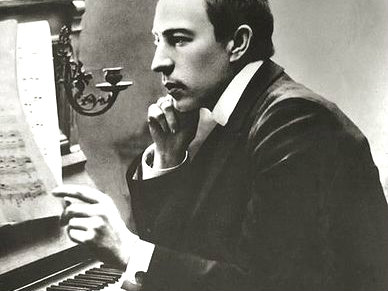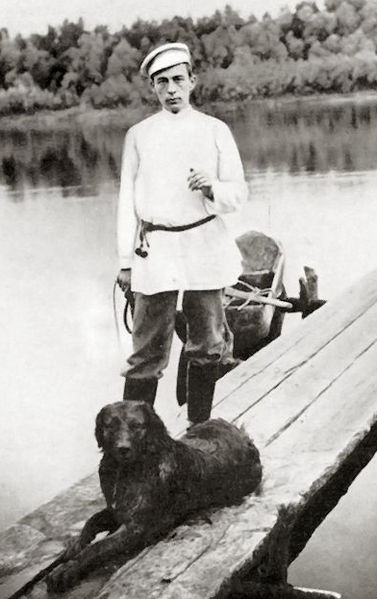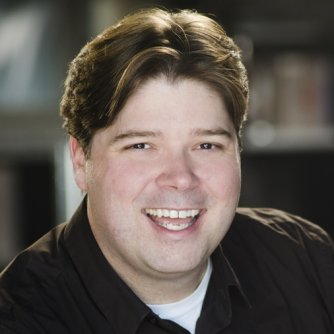
Sergei Rachmaninoff’s admirers cherish his Sonata for Cello and Piano because it's an intimate musical conversation from a composer who mainly focused on writing for the symphony hall or solo keyboard.
But the music also fascinates listeners because of the story it tells about Rachmainoff's early career. The sonata, written in 1901, is one of the first pieces Rachmaninoff composed as he emerged from a three-year bout of writer’s block in his mid twenties.
Throughout the 34-minute piece, Rachmaninoff drops musical hints about his story, according to pianist Wu Han and cellist David Finckel, who’ve recorded the piece and played it many times.
Finckel and Wu Han -- who teach chamber music and perform often at the Aspen Music Festival and School -- talked to CPR Classical about how the sonata points to the composer’s writer's block, his encounter with hypnosis therapy and ultimately a sense of victory as he regained his confidence.
‘A long, sad story’

The slow, sorrowful interplay between cello and piano that opens the piece feels a bit like Rachmaninoff saying to listeners, “Let me tell you a long, sad story,” Finckel told CPR Classical.
“And immediately the cinematic quality brings to the mind’s eye a kind of endless landscape. A long journey over the horizon. A sense of space.”
The last few years had been been a slog for the composer. His Symphony No. 1 flopped, with one critic likening the premiere to enduring the plagues in the Book of Exodus. The reviews devastated the young composer and triggered his writer's block. Later, during a visit with Russian writer Leo Tolstoy, the legendary author dismissed one of Rachmaninoff’s compositions, saying, “Is such music needed by anyone?”
A furious snowstorm
The landscape shifts in the sonata’s second movement, evoking a punishing blizzard scene. But this section also shows off the composer’s ability to keep the music from sounding overwhelmingly bleak, Finckel noted.
“In that snowstorm movement,” he said, “there are three moments where you get inside, either by a big fire or you take a big slug of vodka that warms your veins. You can just feel it when you hear these beautiful sections.”
Mixed emotion
The most mournful section of the piece comes in the third movement, when the cello’s melody takes center stage while the piano supplies a swirl of major and minor chords. Wu Han called the movement “the centerpiece and the heart” of the sonata.
“It’s like when you’re so happy, there’s usually some tears there. And sometimes when it’s dramatically sad you can see a little smile behind that sadness. It’s that mixed emotion that makes this slow movement so spectacular,” she said.
With Romantic music like this, it’s key for performers to bring their own sense of nuance, Finckel said. He and Wu Han often discuss pacing a performance, and not overwhelming the audience, when they coach their chamber music students each summer at the Aspen Music Festival and School.
- Related: SummerFest 2015 Schedule: Exclusive Live Broadcasts From Colorado Classical Music Festivals
- Related: The Colorado Classical Music Fan’s 2015 Guide To Summer Festivals
“It’s very easy in Romantic music to get excited and blow it all out too early.” Finckel said. “I think the most spontaneous and romantic sounding performances are the ones that have been given the most forethought and careful calculation.”
“You know,” Wu Han added, “when somebody says 'I love you,' when they say it too quickly, it’s just not that fun. You want to really enjoy that moment.”
‘You can write great music’
At one extraordinary point in the middle of the fourth movement, the melody seems to rock back and forth. The music evokes the swinging medallion a hypnotist might dangle in front of a patient.
For Wu Han, this section speaks to Rachmaninoff’s healing sessions with hypnotherapist Dr. Nikolai Dahl, which cured the composer's writer's block. “All I can think is, Dr. Dahl tried to hypnotize him: 'You can write great music!' And then after this whole section there’s an awakening moment.”
Struggle and triumph

As the piece nears its conclusion, the pianist plays bombastic chords that remind the listener of Rachmaninoff's struggle that followed the disastrous premiere of Symphony No. 1, Wu Han said.
“It’s epic. It’s Russian. It’s a war,” she said. “It’s his own struggle and his awakening and his triumph overcoming this disadvantage -- this incredible review that destroyed his confidence.”
Ultimately, after the battle chords fade and the hypnotic passages end, the music resolves and there’s a sense of victory.
Similarly, Rachmaninoff’s career blossomed soon after he underwent hypnotherapy, overcame writer’s block and composed the sonata. Rachmaninoff went on to be a brilliant soloist and composer who wrote piano concertos that are as athletic as they are musical -- that drive pianists crazy trying to master them.
“And thank God for Dr. Dahl, that this piece exists,” Wu Han said. “We have a great pianist and these great compositions that lasted for a century. For musicians, we’re just so lucky to have this piece.”
David Finckel and Wu Han recorded the Rachmaninoff Sonata in 2001 for a disc called "Russian Classics" and released it on ArtistLed, a music label they founded. The married musicians also give recitals and teach chamber music at the Aspen Music Festival and School, and serve as artistic directors at the Chamber Music Society of Lincoln Center and Music @ Menlo.








